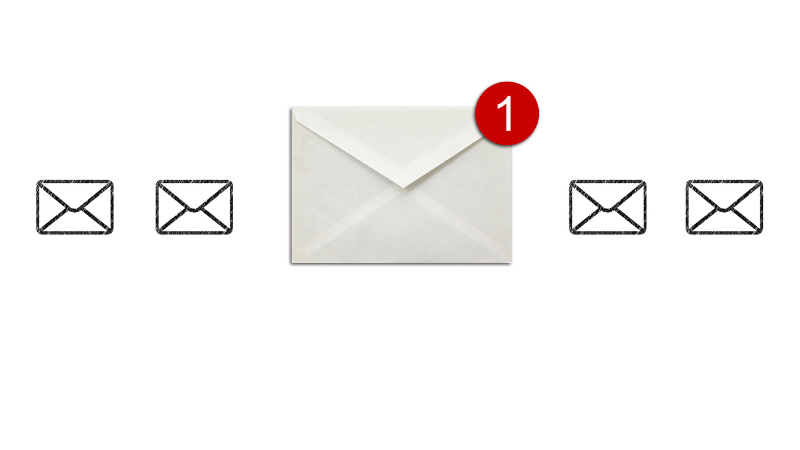Email Click-Through Rate (CTR) is a metric that measures email marketing campaign success. It is calculated by the number of recipients who click on a link in the email. A low CTR can mean fewer leads and sales, so it’s important to create effective email marketing campaigns to boost it.
Want tips to improve CTR, generate leads and win more business? We’re here to help!
Key Metric: Understanding the Average Click-Through Rate
What is considered a good rate for email click-through? Determining an average click-through rate (CTR) can be difficult as benchmarks vary greatly. Some sources suggest a CTR of over 10% is good, while others report that the average CTR across all industries is 3.57%. Factors such as industry and type of email can also affect CTR, with legal emails having the lowest at 1.04% and sports emails having the highest at 7.49%. To improve your CTR, it’s important to first focus on increasing your email open rate. Tips to do this include ensuring subscribers have voluntarily opted-in to receive emails and using tools like OptinMonster to attract interested subscribers. Besides, avoid buying email lists as recipients who haven’t opted-in are less likely to open emails and may mark them as spam, which can harm your sender reputation.
Plus, to determine how well you are performing in email marketing, it is important to compare your own data with industry averages. Currently, the average click-through rate (CTR) is 7%, a record high. If your CTR is higher than this, you are performing well. However, if it is lower, it may be necessary to find ways to increase engagement. Although there may be slight variations between countries, overall international email marketing is not vastly different. The device that the email is opened on can greatly impact the CTR. Emails opened on a desktop have a higher CTR than those opened on mobile.
Well, as the trend of increased email usage continues, it is crucial to optimize emails for all devices to ensure optimal engagement and click-through rates.
That is what we refer to as a healthy rate!

Improving Campaign Metrics: Device Impact and Email Strategies
Optimizing your email campaigns for all devices is crucial for achieving a high click-through rate. This means ensuring that the email is easily readable on both desktop and mobile devices, as research has shown that readers who open an email on their desktop are three times more likely to click on the campaign compared to those who open it on mobile. Also, if the email is optimized for mobile devices, there will be an increase in engagement, which is why 80% of brands always send optimized emails. In fact, emails that are optimized for mobile generate 15% higher click-through rates than those that are not optimized for mobile. It is important to note that this trend will continue and will only become more important in the future.
Furthermore, It is a well-known fact that optimizing your emails for all devices is crucial in today’s digital age. But did you know that the timing and relevance of your email campaigns can also greatly impact their success?
Research by Get Response found that the best day to send an email in order to achieve the highest click through rate is on Monday and Tuesday, with the worst day being Saturday. The study also found that email click through rates are highest at 6am and 6pm, with a peak click through rate range between 11am and 2pm. However, it is important to note that the real opportunity for success lies in finding the time when people not only open an email, but read it and take action on it as well, known as click to open rate (CTO). Therefore, the best time to send an email to maximize open rates and click through rates is before and after daytime working hours, as people are more relaxed and have more time to engage with email campaigns. Additionally, using personalization and relevance in your email campaigns can increase click through rates by as much as 139%, and including social sharing icons can also greatly increase click through rates. In short, optimizing your email campaigns for timing, relevance, and personalization can greatly increase their success.
Including social sharing icons in your email campaigns, particularly LinkedIn, can lead to higher click through rates, with LinkedIn having the highest at 7.9%.
Email Campaign CTAs: Quantity, Placement, and Design
Including less CTAs (call to actions) in your email campaigns can lead to higher click through rates, as demonstrated by a study conducted by Whirlpool, in which an email campaign with only one CTA increased click through rate by 42% compared to an email campaign with four CTAs. This can be explained by the “paradox of choice” theory, which states that too many options can lead to indecision and ultimately, a lack of action.
The lesson here is to keep it simple and use fewer options for better results!
The placement of CTA’s plays a significant role in click through rates, with studies showing that CTA’s placed in the left region of an email have a larger impact than those placed on the right. Additionally, using a CTA button instead of a text link can increase click through rate by 28%, and including a moderate number of images in emails can also boost CTR. However, it’s important to test which strategies work best for your audience.
A summary of the key findings from the article suggests that the number of CTA’s and the placement of CTA’s play an important role in click through rates, as well as the use of images and whether to use text links or buttons for the CTA. The study also recommends testing different strategies to determine what works best for the audience. An example of this is given with a B2B email marketing campaign that was tested with different formats and timings to compare the click through rates.
Finally, to improve your email click-through rates, use these tips: Add social sharing icons, personalize subject lines, optimize for all devices, include fewer CTAs, make emails visual, try sending on weekends, test sending at different times, keep CTAs at the top and left, and continue to test and improve.
Never forget Social Media is for reach but Email is for revenue – Bryan Eisenberg-



